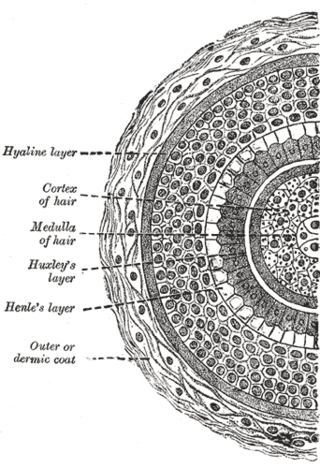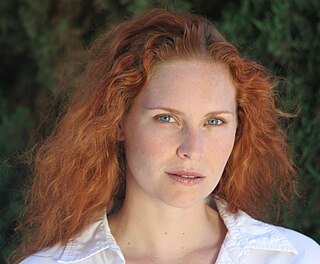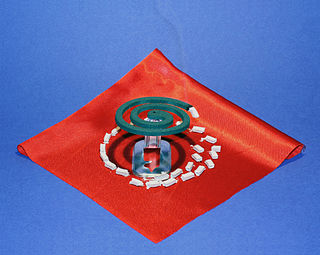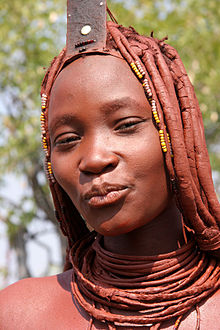
Hair is a protein filament that grows from follicles found in the dermis. Hair is one of the defining characteristics of mammals. The human body, apart from areas of glabrous skin, is covered in follicles which produce thick terminal and fine vellus hair. Most common interest in hair is focused on hair growth, hair types, and hair care, but hair is also an important biomaterial primarily composed of protein, notably alpha-keratin.

Mosquitoes are a family, the Culicidae, of some 3,600 species of small flies. The word "mosquito" is Spanish for "little fly". Mosquitoes have a slender segmented body, one pair of wings, three pairs of long hair-like legs, and specialized, highly elongated, piercing-sucking mouthparts. All mosquitoes drink nectar from flowers; females of some species have in addition adapted to drink blood. Evolutionary biologists view mosquitoes as micropredators, small animals that parasitise larger ones by drinking their blood without immediately killing them. Medical parasitologists view mosquitoes instead as vectors of disease, carrying protozoan parasites or bacterial or viral pathogens from one host to another.

Human skin color ranges from the darkest brown to the lightest hues. Differences in skin color among individuals is caused by variation in pigmentation, which is the result of genetics, exposure to the sun, disorders, or all of these. Differences across populations evolved through natural selection or sexual selection, because of social norms and differences in environment, as well as regulations of the biochemical effects of ultraviolet radiation penetrating the skin.

Melanin consist of oligomers or polymers arranged in a disordered manner which among other functions provide the pigments of many organisms. Melanin pigments are produced in a specialized group of cells known as melanocytes. They have been described as "among the last remaining biological frontiers with the unknown".

Freckles are clusters of concentrated melaninized cells which are most easily visible on people with a fair complexion. Freckles do not have an increased number of the melanin-producing cells, or melanocytes, but instead have melanocytes that overproduce melanin granules (melanosomes) changing the coloration of the outer skin cells (keratinocytes). As such, freckles are different from lentigines and moles, which are caused by accumulation of melanocytes in a small area. Freckles can appear on all types of skin tones. Of the six Fitzpatrick skin types, they are most common on skin tones 1 and 2, which usually belong to North Europeans. However, it can also be found on people all over the world. In England a historical term for freckles is summer-voys, sometimes spelt summervoise, which may be related to the German "summersprosse".

Dreadlocks, also known as dreads or locs, are a hairstyle made of rope-like strands of hair. This is done by not combing the hair and allowing the hair to mat naturally or by twisting it manually. Over time the hair will form tight braids or ringlets.

The Himba are an indigenous people with an estimated population of about 50,000 people living in northern Namibia, in the Kunene Region and on the other side of the Kunene River in southern Angola. There are also a few groups left of the OvaTwa, who the OvaHimba consider to be part of their tribe, but are hunter-gatherers. Culturally distinguishable from the Herero people, the OvaHimba are a semi-nomadic, pastoralist people and speak OtjiHimba, a variety of Herero, which belongs to the Bantu family within Niger–Congo. The OvaHimba are semi-nomadic as they have base homesteads where crops are cultivated, but may have to move within the year depending on rainfall and where there is access to water.

Red hair, also known as orange hair or ginger hair, is a human hair color found in 1–2% of the world population, appearing with greater frequency (2–6%) among people of Northern or Northwestern European ancestry and lesser frequency in other populations. It is most common in individuals homozygous for a recessive allele on chromosome 16 that produces an altered version of the MC1R protein.

Human hair color is the pigmentation of human hair follicles due to two types of melanin: eumelanin and pheomelanin. Generally, if more melanin is present, the color of the hair is darker; if less melanin is present, the hair is lighter. The tone of the hair is dependent on the ratio of black or brown eumelanin to yellow or red pheomelanin. Levels of melanin can vary over time causing a person's hair color to change, and it is possible to have hair follicles of more than one color on the same person. Some hair colors are associated with some ethnic groups due to observed higher frequency of particular hair color within their geographical region, e.g. straight dark hair amongst East Asians, Southeast Asians, Polynesians and Native Americans, a large variety of dark, fair, curly, straight, wavy and bushy hair amongst Europeans, West Asians and North Africans, curly, dark, and uniquely helical hair with Sub Saharan Africans, whilst gray, white or "silver" hair is often associated with age.

N,N-Diethyl-meta-toluamide, also called diethyltoluamide or DEET, is the oldest, most effective and most common active ingredient in commercial insect repellents. It is a slightly yellow oil intended to be applied to the skin or to clothing and provides protection against mosquitoes, flies, ticks, fleas, chiggers, leeches, and many other biting insects.

Ochre, or ocher in American English, is a natural clay earth pigment, a mixture of ferric oxide and varying amounts of clay and sand. It ranges in colour from yellow to deep orange or brown. It is also the name of the colours produced by this pigment, especially a light brownish-yellow. A variant of ochre containing a large amount of hematite, or dehydrated iron oxide, has a reddish tint known as "red ochre".

An insect repellent is a substance applied to the skin, clothing, or other surfaces to discourage insects from landing or climbing on that surface. Insect repellents help prevent and control the outbreak of insect-borne diseases such as malaria, Lyme disease, dengue fever, bubonic plague, river blindness, and West Nile fever. Pest animals commonly serving as vectors for disease include insects such as flea, fly, and mosquito; and ticks (arachnids).

The history of cosmetics spans at least 7,000 years and is present in almost every society on earth. Cosmetic body art is argued to have been the earliest form of a ritual in human culture. The evidence for this comes in the form of utilised red mineral pigments including crayons associated with the emergence of Homo sapiens in Africa. Cosmetics are mentioned in the Old Testament—2 Kings 9:30 where Jezebel painted her eyelids—approximately 840 BC—and the book of Esther describes various beauty treatments as well.

Light skin is a human skin color that has a base level of eumelanin pigmentation that has adapted to environments of low UV radiation. Light skin is most commonly found amongst the native populations of Europe, Central Asia, and Northeast Asia as measured through skin reflectance. People with light skin pigmentation are often referred to as "white" although these usages can be ambiguous in some countries where they are used to refer specifically to certain ethnic groups or populations.

African-American hair or Black hair refers to hair types, textures, and styles that are linked to African-American culture, often drawing inspiration from African hair culture. It plays a major role in the identity and politics of Black culture in the United States and across the diaspora. African-American hair often has a kinky hairy texture, appearing tightly coiled and packed. Black hair has a complex history, culture, and cultural impact, including its relationship with racism.

Ethyl butylacetylaminopropionate is an insect repellent whose trade name is IR3535 and was developed and commercialized by Merck KGaA (Germany). It is a colorless and odorless oil with a good skin feel in final products, and it is biodegradable.
Margaret Jacobsohn is a Namibian environmentalist. She was awarded the Goldman Environmental Prize in 1993, jointly with Garth Owen-Smith, for their efforts on conservation of wildlife in rural Namibia.

Culture in Namibia is a blend of many different people and its culture and customs have absorbed both African and European elements and fused them into a blend of the two. Although the country is urbanising rapidly, a majority of Namibians still live in rural areas and lead largely impoverished lives. It is among these people, however, that cultural tradition survive most strongly.
Letsoku is a clayey soil used by several tribes in Southern Africa and other parts of the African continent.The Sotho-Tswana of Southern Africa have described a number of clay soils as letsoku. These are named differently by other tribes in the region, it is known as chomane in Shona, ilibovu in Swati, imbola in Xhosa and luvhundi in Venda, there are many other names given by other ethnic groups. Letsoku occurs naturally in a number of colours and it has many use, it is mostly used for cosmetic applications in Southern Africa. However, other functions of it is related to artwork, medicinal use, cultural symbolism and traditional beliefs
Of the many characteristics of humans, nakedness and clothing are highly related. The loss of body hair distinguishes humans from other primates. The current evidence indicates that anatomically modern humans were naked in prehistory for at least 90,000 years before the invention of clothing. Today, isolated Indigenous peoples in tropical climates continue to be without clothing in many everyday activities.

















